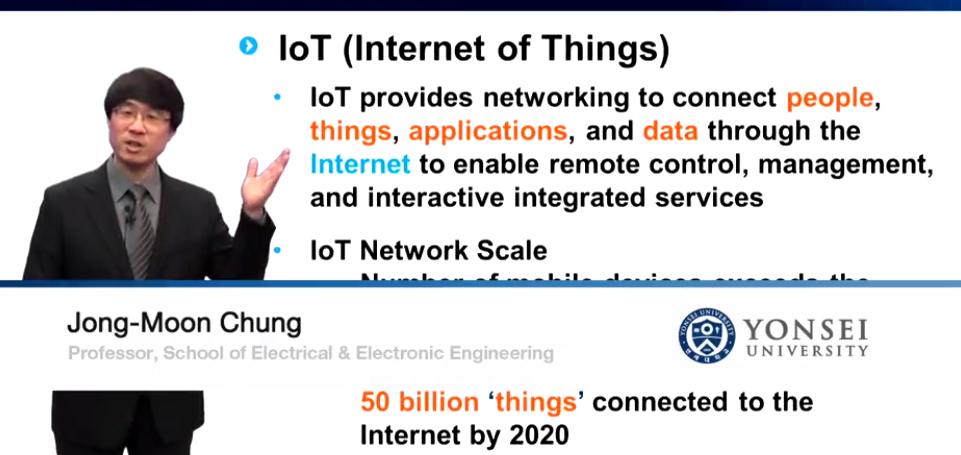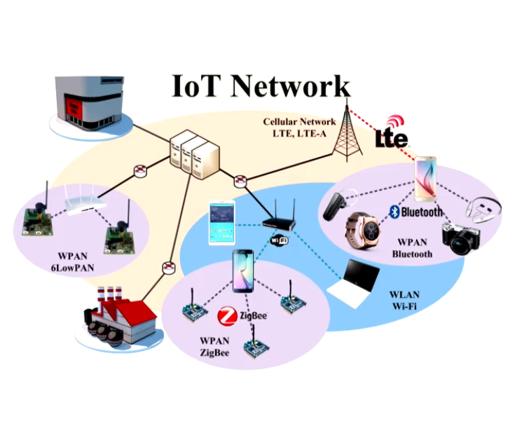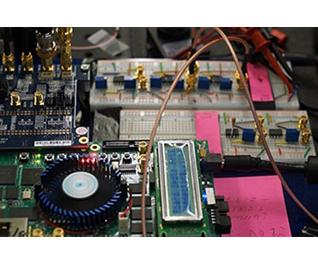| Online Training For IoT Development |
| Written by Harry Fairhead | |||
| Wednesday, 12 October 2016 | |||
|
The Internet of Things is an emerging technology which makes it both topical and hard to pin down. You'll obtain completely different viewpoints according to which MOOC you choose. So it's worth surveying the field. A Future Learn course titled The Internet of Things from Kings College London presented by Professor Mischa Dohler who describes himself as an IoT pioneer, restarts on November 7, 2016. Designed for: practising engineers, industrialists, researchers and entrepreneurs who are interested in the fundamentals, impact and potentials of the Internet of Things . this 4-week course, with a workload of 2 hours per week, sets out to: equip you with business insights to help you become an Internet of Things wizard By the end of it you are expected to have become "an insider" who is ready to start your own IoT venture. Even if you don't posses the pre-requisites for the course, which are: some basic knowledge of technology, wireless communications and how markets function given it is an entirely free course (unless you want a certificate, aka Statement of Participation) it may still be of interest, in particular for its emphasis on security and privacy issues. For a different overview of the IoT you could dip into one of the courses in the Emerging Technologies Specialization, from Yonsei University on Coursera. Professor Jong-Moon Chung devotes Week 1 of Course 3 Internet of Things & Augmented Reality Emerging Technologies and in the couse description states: IoT is a new emerging technology domain which will be used to connect all objects through the Internet for remote sensing and control. IoT uses a combination of WSN (Wireless Sensor Network), M2M (Machine to Machine), robotics, wireless networking, Internet technologies, and Smart Devices. There are four videos, IoT Introduction; IoT Architecture; IoT Technologies and IoT Networks. Coursera also offers two complete specializations that serve as practical introductions. At Intermediate level, with related experience required there's the Internet of Things Specialization for which University of California, San Diego has partnered with Qualcomm. It is made up of an initial, orientation, course, Internet of Things: How did we get here? and then the next four courses use one of Qualcomms products, the DragonBoard 410c single board computer and in the final one, the Capstone project you build a mobile surveillance system with the DragonBoard that uses at least 2 sensors, at least 1 communication protocol and at least 1 actuator. The other specialization An Introduction to Programming the Internet of Things is at Beginner Level and comes from University of California, Irvine UCI. With six 4-week courses expecting between 1 and 4 hours per week, it is taught by Professor Ian Harris, it and covers embedded systems, the Raspberry Pi Platform, and the Arduino environment for building devices that can control the physical world. For the final Capstone Project, you’ll apply the skills you learned by designing, building, and testing a microcontroller-based embedded system and for the three required assignments you do NOT need to purchase any software and hardware. There is an optional fourth assignment for students who wish to build and demonstrate their system using an Arduino or Raspberry Pi. It is made up of:
Coursera also offers a standalone course from IBM, A developer's guide to the Internet of Things (IoT) which starts from the premise: The Internet of Things (IoT) is an area of rapid growth and opportunity. Technical innovations in networks, sensors and applications, coupled with the advent of 'smart machines' have resulted in a huge diversity of devices generating all kinds of structured and unstructured data that needs to be processed somewhere. Collecting and understanding that data, combining it with other sources of information and putting it to good use can be achieved by using connectivity, analytical and cognitive services now available on the cloud, allowing development and deployment of solutions to be achieved faster and more efficiently than ever before. Taught by Developer Advocate, Brian Innes, this 4 week course, requiring 2-4 hours per week, is pitched as an entry level introduction to developing and deploying solutions for the Internet of Things and is hands on - so you will need a Raspberry Pi device - any model with a 40 pin header. The course also uses the SenseHAT extension board, although there is a simulator provided if you can't get a SenseHAT. You'll also need to sign up for a 30-day trial on IBM Bluemix and while you don't need prior experience of that, or the Watson IoT platform which is also used by the course,the assignments use both Python and JavaScript so some basic skill in these languages is required. Coursera also has a pair courses aimed at product managers and technical managers who need to take decisions relating to embedded devices. These are under the auspices of EIT Digital, a pan-European education and research-based open innovation organization. Introduction to Architecting Smart IoT Devices (3 weeks, 1-3 hours per week at Beginner Level) and Architecting Smart IoT Devices (5 weeks at Intermediate Level) are about embedded systems, and how to develop an embedded systems device, in the area of IoT. Both are taught by Martin Timmerman of the Royal Military Academy Brussels and Vrije Universiteit Brussels (VUB-ETRO) and he is joined in the second course by Maarten Weyn, Faculty of Applied Engineering, University of Antwerp. For an audience of Bachelor and Master's students, who like practical programming and making IoTs applications Embedded Hardware and Operating Systems, also from EIT Digital, is taught by Nguyen Gia Tuan from Department of Information Technology, Faculty of Mathematics and Computer Sciences, University of Turku, Finland. It has a commitments of 4 weeks at 2-6 hours per week. Students need C programming as a prerequisite and it relies on using Cooja, the Contiki network simulator. Its blurb states: In this course we will talk about two components of a cyber physical system, namely hardware and operating systems. After completing this course, you will have the knowledge of both hardware components and operating systems. You are able to plan and use embedded operating systems in resource-constraint devices for Internet-of-Things (cyber physical system) applications. In addition, you can use Cooja simulation for designing and simulating wireless sensor network applications. The course is actually quite fun at the end when you are playing around with Cooja simulation for IoTs applications. So you can create and simulate your own design for sensor network applications. A lot of features and examples of Contiki and Cooja can be explored via assignments. There are some optional assignments of wireless sensor network applications for students who want to explore more about embedded OS in IoTs applications. For a different angle, that of discovering the relationship between Big Data and the Internet of Things (IoT), take a look at Enabling Technologies for Data Science and Analytics: The Internet of Things, a self-paced course from Columbia University on the edX platform. Its blurb states: The Internet of Things is rapidly growing. It is predicted that more than 25 billion devices will be connected by 2020. In this data science course, you will learn about the major components of the Internet of Things and how data is acquired from sensors. You will also examine ways of analyzing event data, sentiment analysis, facial recognition software and how data generated from devices can be used to make decisions. Although it is a 5-week course, if you devote 7-10 hours per week to it, it is only the first 3 weeks that cover IoT. Week 1 starts with an introduction to the Internet of Things, then moves on to wireless communications and standards - WiFi, Bluetooth and Zigbee. Week 2 covers Networks for IoT, securing networks and explores three lower-power networks - 6LoWPAN, CoAP and MQTT and Week 3 topics include embedded systems, interfacing with the phyical world, energy harvesting and it concludes with three modules on IoT Economics. One thing that is very apparent if you want to be practically involved with IoT is that you need a firm foundation in electronics and edX can also help you with this. It offers three courses in Circuits and Electronics taught by Anant Agarwal edX CEO and MT Professor. Circuits and Electronics 1: Basic Circuit Analysis Circuits and Electronics 2: Amplification, Speed and Delay Circuits and Electronics 3: Applications Each is expected to take 7 weeks and 8-10 hours per week but there is leeway to take them more slowly. If you missed Anant Agarwal's course when it first appeared as the launch MITx course it comes highly recommended. Related ArticlesMITx Experimental Course Completed - A Report Fundamentals of Digital Circuits From MITx
To be informed about new articles on I Programmer, sign up for our weekly newsletter, subscribe to the RSS feed and follow us on Twitter, Facebook, Google+ or Linkedin.
Comments
or email your comment to: comments@i-programmer.info |
|||
| Last Updated ( Thursday, 20 June 2019 ) |




